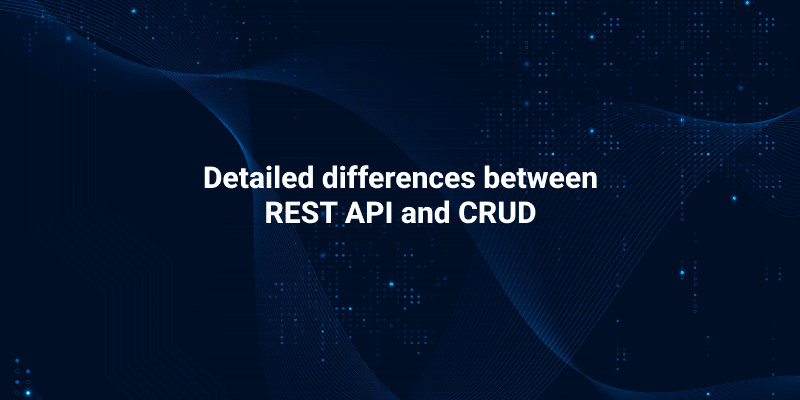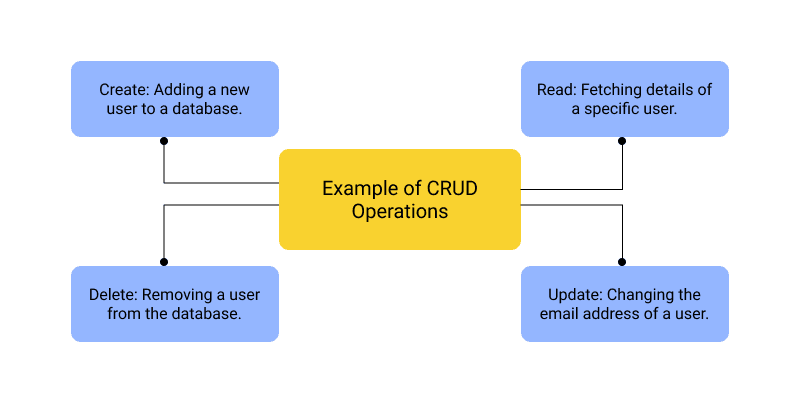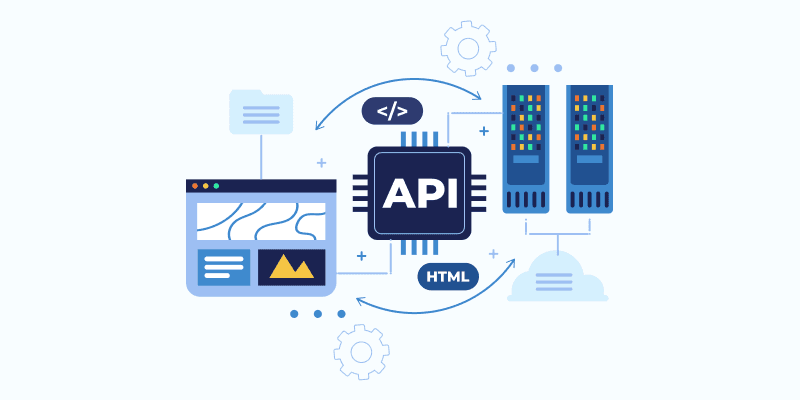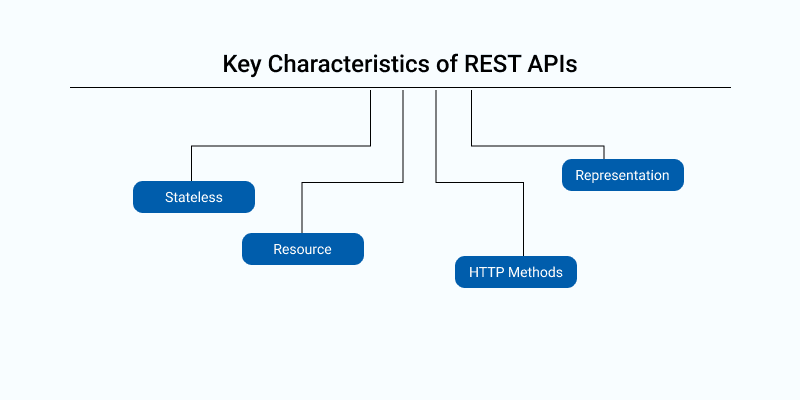Detailed differences between REST API and CRUD

When diving into web development and API design, you'll frequently encounter two fundamental concepts: REST API and CRUD. While closely related and often mentioned together, they serve different purposes and function in distinct ways. Let's explore these concepts in detail, breaking down what they mean and how they differ.
What is CRUD?
CRUD stands for Create, Read, Update, and Delete. These are the four basic operations that can be performed on data in a database:

Create: Adding new data.
Read: Retrieving existing data.
Update: Modifying existing data.
Delete: Removing data.
CRUD operations are the backbone of database management systems and are essential for manipulating persistent data.
Example of CRUD Operations

Create: Adding a new user to a database.
Read: Fetching details of a specific user.
- Update: Changing the email address of a user.
Delete: Removing a user from the database.
How CRUD Works
In a typical application, CRUD operations are executed through SQL (Structured Query Language) commands:
- Create: INSERT INTO users (name, email) VALUES ('John Doe', 'john@example.com');
- Read: SELECT * FROM users WHERE id=1;
- Update: UPDATE users SET email='john.new@example.com' WHERE id=1;
- Delete: DELETE FROM users WHERE id=1;
These commands interact directly with the database to perform the specified operations on data records.
What is REST API?
REST stands for Representational State Transfer. It is an architectural style for designing networked applications. RESTful APIs allow different systems to communicate over the internet using standard HTTP methods.

Example of REST API
- GET /users: Fetch a list of users.
- POST /users: Add a new user.
- PUT /users/{id}: Update the information of a specific user.
- DELETE /users/{id}: Delete a specific user.
How REST API Works
REST APIs interact with web resources using HTTP methods:
GET: Retrieve data from the server.
POST: Send data to the server to create a new resource.
PUT: Update an existing resource on the server.
DELETE: Remove a resource from the server.
These operations are performed over the web using URLs to identify resources and HTTP methods to specify the desired action.
Key Characteristics of REST APIs

Stateless: Each request from a client contains all the information needed to process the request. The server does not store any state of the client session.
Resource-Based: Everything is considered a resource, and each resource is accessible via a unique URI (Uniform Resource Identifier).
HTTP Methods: REST APIs use standard HTTP methods like GET, POST, PUT, DELETE, etc.
- Representation: Resources can be represented in various formats such as JSON, XML, HTML, etc.
Theoretical Concepts Behind CRUD and REST API
CRUD Concepts
Data Integrity
CRUD operations ensure that data remains consistent and accurate within the database. Proper implementation of CRUD operations helps maintain data integrity.
ACID Properties
CRUD operations are often associated with ACID (Atomicity, Consistency, Isolation, Durability) properties of database transactions, ensuring reliable and predictable behavior.
SQL and NoSQL CRUD is applicable to both SQL databases (like MySQL, PostgreSQL) and NoSQL databases (like MongoDB, CouchDB), though the implementation may vary.
REST API Concepts
Uniform Interface
RESTful APIs adhere to a uniform interface, simplifying and decoupling the architecture, which allows each part to evolve independently.
Statelessness
Each request from a client to server must contain all the information needed to understand and process the request. The server should not store any context about the client between requests.
Cacheability
Responses from the server must be defined as cacheable or non-cacheable, improving performance by reusing prior responses.
Layered System
A client cannot ordinarily tell whether it is connected directly to the end server, or to an intermediary along the way, enhancing scalability and security.
Code on Demand (optional)
Servers can temporarily extend or customize the functionality of a client by transferring executable code.
Key Differences Between CRUD and REST API
Conclusion
In summary, CRUD is a set of basic operations for managing data in a database. At the same time, REST API is a comprehensive framework for designing networked applications that leverage these operations over HTTP. Understanding the distinction between the two is crucial for effective web development and API design. REST APIs utilize CRUD operations but extend beyond them to provide a robust and flexible way for different systems to interact over the web.
By clearly understanding the roles and differences between REST API and CRUD, developers can design more efficient and effective applications that make the most of both concepts. Whether you're managing a simple database or building a complex web service, knowing when and how to use these tools is key to success.
